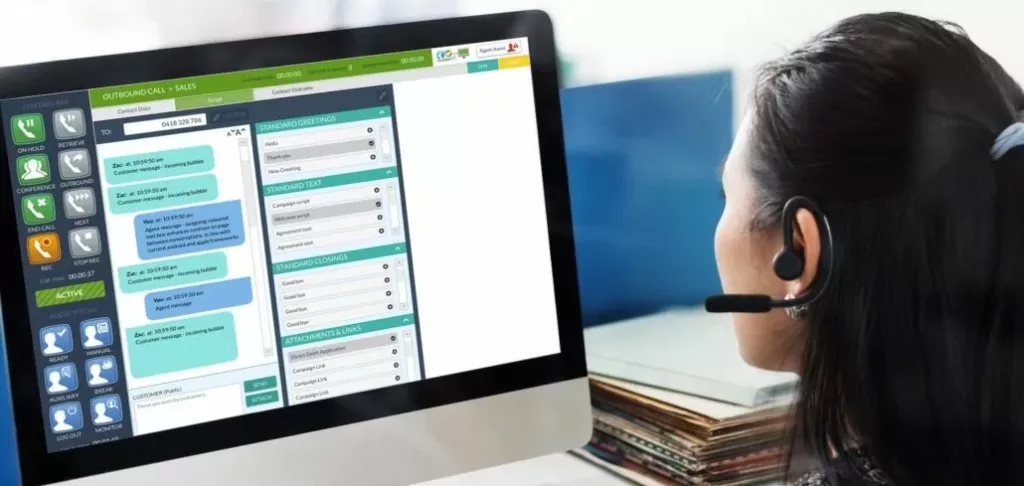Having amazing contact center software is the foundation for creating a positive customer service experience, but it’s also the key to having satisfied agents. Your customer service representatives use your contact center software daily to interact with customers in order to resolve problems and answer questions. They’re actually using the software more often than your customers. If there’s something wrong or inefficient with your software, your service agents will suffer, too.
If you already have a contact center you like, don’t worry because there is a Contact Center AI platform that can be integrated into your existing application. This addition will add several important features to your contact center’s functionality. For example, you’ll get automation solutions, ticket deflection support, conversational AI and intelligent workflows, interactive voice response, and automatic call distribution. All of these features support your customers by making your agents’ job easier.
Since agent satisfaction is critical to prevent turnover and provide good customer service, it makes sense to invest time and resources to ensure you have the best contact center application. Excellent software makes all the difference when it comes to agent satisfaction, and here’s why.
-
Centralized data in one dashboard supports agents
Your customer support agents need access to all data in one place. If you’re using multiple applications to manage customer support requests, your agents are likely frustrated from the inefficiency.
By using a contact center application that provides data in a unified dashboard, you’re empowering your agents to serve customers faster and more efficiently. Unified data also helps agents compile their reports and make accurate notes about each customer’s issue and how it was resolved. When your contact center is powered by AI, this data will be used for the system to learn more about problems and solutions, which can increase the efficiency of your self-service options.
As your self-service options get better, more tickets are deflected, giving your agents more time to give their attention to urgent requests. This brings up the next point: ticket deflection.
-
Ticket deflection makes agents happier
Support agents are particularly prone to becoming burned out when presented with an enormous and overwhelming workload. Not only does this negatively impact customers, but it can lead to frequent turnover and team members who stick around, but become frustrated and bitter. The solution is ticket deflection that prompts people to solve their own requests.
When your system doesn’t prompt people to solve their own issues first, you’re going to get a high volume of tickets. Many of those requests will be simple and repetitive questions, like people asking how to reset their password, how to find a certain feature, or how to use a tool.
All of these requests – and more like them – can be resolved through self-help methods. For instance, your chatbot can provide people with a list of links to content related to their question. If their question still isn’t resolved, they can still open a ticket, but most of the time, good links will solve most simple requests.
As more tickets are deflected, your agents won’t feel pressured to blast through a bunch of tickets haphazardly to meet their daily goals. Instead, they’ll have time to give their full attention to each customer request that comes through their queue. Ticket deflection is the key to happy support teams and low agent attrition.

-
Automatic ticket routing
There’s nothing more frustrating for agents than getting tickets they can’t resolve. Tickets need to be routed to the proper team from the start in order for agents to be effective. It takes up valuable time when tickets need to be read by an agent and then forwarded to another department. Unfortunately, this happens with basic contact center applications.
When you upgrade your contact center software to one that provides automatic ticket routing, your agents will be ecstatic. The system can be programmed to route tickets based on customer selections when submitting the ticket, but also by keywords typed into the body of the request. This method can help you route tickets not only to the right department but also to the right support agent directly in some cases. For instance, you might have a particular support agent who is a whiz at handling certain issues more than others.
Do you have a good contact center application?
If you’re still relying on email for support requests, or if your contact center software doesn’t help your agents meet the complex needs of today’s customers, it’s time for an upgrade. You need software that will give your agents all the tools they need to provide top-shelf customer service.